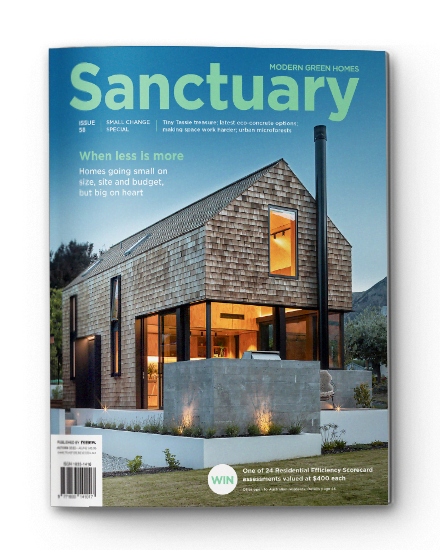Sustainability in the mix: The latest in eco-concrete
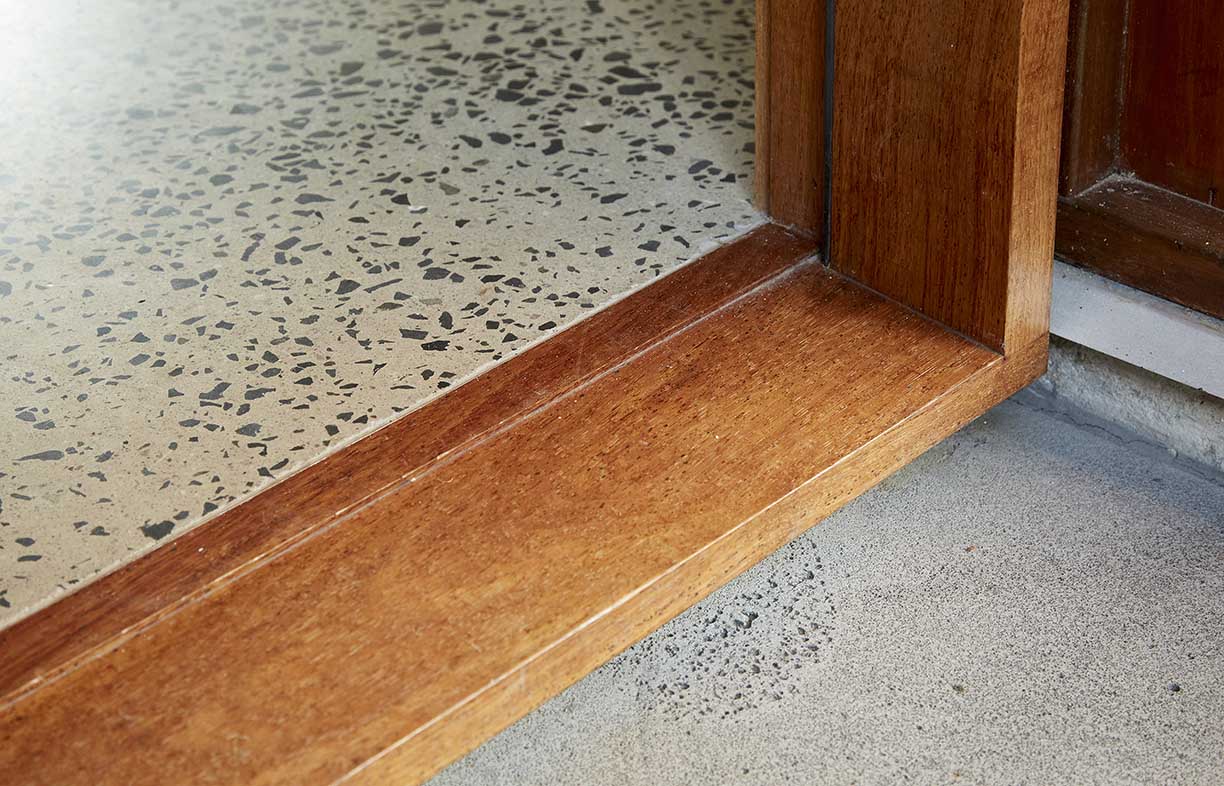
Concrete is a beloved building material for its thermal mass benefits, versatility, strength and durability, yet comes at the cost of shockingly high embodied carbon. Happily, more environmentally friendly mixes are coming online. Experienced sustainable designer Dick Clarke looks at the problem and some of the latest solutions.
Concrete is perhaps the world’s most ubiquitous building material, found almost everywhere humankind builds things. With its infinite mouldability, extremely high compressive and shear strength, and ability to be reinforced to give it massive tensile strength as well, it is an obvious choice for structures. Its resilience, even in adverse environments, is yet another reason it has stood the test of time: the earliest true concrete construction we know of is the Pantheon in Rome, built around 126CE.
Ancient concretes were made from a variety of component materials, but these days the most common manifestation is made from three basic ingredients: cement (usually Portland cement), sand and gravel aggregates, and water. It can include decorative aggregates and specialist admixtures that modify its characteristics to suit different purposes.
Concrete also has useful thermal properties. ‘Thermal mass’ describes a material’s ability to absorb, store and re-radiate heat, and concrete has high thermal mass, making it the darling of the passive solar design movement since the 1970s (see my article on concrete floors in Sanctuary 37 for more). This is why it is such a common choice for floor structure: the ‘slab on ground’ has saved many an otherwise disastrous project home from being unbearably hot in summer and cold in winter, and in a well-designed passive solar home it’s a choice that can contribute significantly to internal thermal comfort and reduced heating and cooling energy needs.
However, concrete has always had a darker side. Currently, thanks largely to its cement content, standard concrete production accounts for about eight per cent of global greenhouse gas emissions – a big hit for a single material type. Not so long ago we cared naught for carbon emissions from the materials we made and used. Thankfully that is no longer the case, with consumer and government awareness of embodied carbon – the amount of carbon emitted during the manufacture of a material or product – increasingly in focus (the EPiC Database of Australian construction materials’ ecological impacts makes interesting reading on the topic). Somewhat surprisingly, the commercial world has taken an interest, in many cases actually taking the lead well ahead of regulators.
Another environmental issue with standard concrete is that it is very alkaline, due to the Portland cement that is the key to the curing reaction. The clean-up wash from concrete pours must now be contained – allowing it to enter a catchment is a pollution event, attracting large fines. But even when cured, concrete can change the pH of fresh water that simply contacts its surface, which can be a problem when it runs into creeks. Affecting the ability of invertebrate aquatic life such as yabbies to form exoskeletons is just one example of the impact of concrete run-off.
How concrete is made, and the problem with ‘business as usual’
Like all building materials, concrete’s production brings inherent ecological impacts. Cement is the single biggest problem, as its production process is both highly energy intensive and liberates large amounts of carbon dioxide. Portland cement is made by heating limestone in the presence of certain clays or shales, creating an interim stage called clinker. This is then ground with gypsum to create Portland cement, so called because it resembled the colour of the Portland limestone commonly used in London’s buildings when the process was invented in 1824. Typically, the production of one tonne of Portland cement releases one tonne of greenhouse gases; that means about 2.5 tonnes for each cubic metre of standard concrete. So the 20 cubic metres or so of concrete for the slab and foundations of an average three-bedroom house are responsible for about 50 tonnes of carbon emissions. That’s quite an impact.
In addition, the components of the cement – and the aggregates that are added to form concrete – also have their issues. The raw materials must be mined, causing resource depletion and environmental damage. But the main problem is the Portland cement, and this is where a huge amount of research and development has been focused in recent years.
Grey and green at the same time: more eco-friendly alternatives
Aggregates and water
Recycled sand and gravel can be used to lower the environmental impact of concrete, although it can still be challenging to come by suppliers offering this option. One such product was the result of a joint venture between MetroMix and Fairfield City Council in Sydney’s west, that also used recycled and roof-harvested fresh water, with the only ‘virgin’ material being the Portland cement. While this excellent concrete was only available for the council’s own projects, and production has inexplicably ceased recently, it demonstrates what’s possible, and it’s worth asking around.
Cement replacement
Portland cement itself can be reduced or replaced in a concrete mix with other less energy-intensive materials, or with materials whose embodied carbon has already been accounted for by a previous use. Fly ash, a waste product from burning coal for energy or steel manufacture, is the most common cement replacement as it behaves in similar ways to Portland cement. The greenhouse impacts of its production have already been counted during its first ‘burn’ in the coal furnace, so it gets a free ride on the carbon accounting.
Most of Australia’s concrete suppliers have cement replacement mixes available, from as little as 25 per cent replacement up to 65 per cent. Boral was the first to make this option commercially available with their Envirocrete and Envisia products, while MetroMix and others now have similar products. Builders usually enjoy working with them, especially in hot weather, as their slightly longer working time can make all the difference between a rough finish and a perfect finish. They also have better physical properties, with less creep (deflection over time) and lower shrinkage rates. These relatively mainstream lower-carbon concrete products attract a minimal price premium, adding perhaps up to $1,000 to the cost of the slab for an average home.
A Boral Envisia concrete slab was used in a certified Passive House designed by the team at Envirotecture in Sydney’s Strathfield South, for the full story see Sanctuary 56.
Recently, global concrete company Holcim upped the ante with a 100 per cent carbon neutral product called EcoPact Zero, which goes beyond the previous highest benchmarks of low-carbon concrete by incorporating accredited carbon offsets into the cost of every cubic metre of concrete produced. This product won the Best of the Best in the 2021 Architecture & Design Sustainability Awards, simply because of its potential application to virtually every building project in the world. The cost premium is also minimal compared to the benefit: less than $1,000 on an average build.
But the effectiveness of carbon offsets may be questionable, and anyway, are there enough potential offset schemes to cater for concrete’s large share of global greenhouse emissions? Possibly not. And then there is the question of supply of coal-fired byproducts after we finally exit from coal-fired electricity (imminent) and steel-making (soon thereafter). There are decades of stockpiles of fly ash on hand, so that is not today’s problem, but we still need a truly long-term sustainable alternative. That is where geopolymers and other low-carbon alternatives come in.
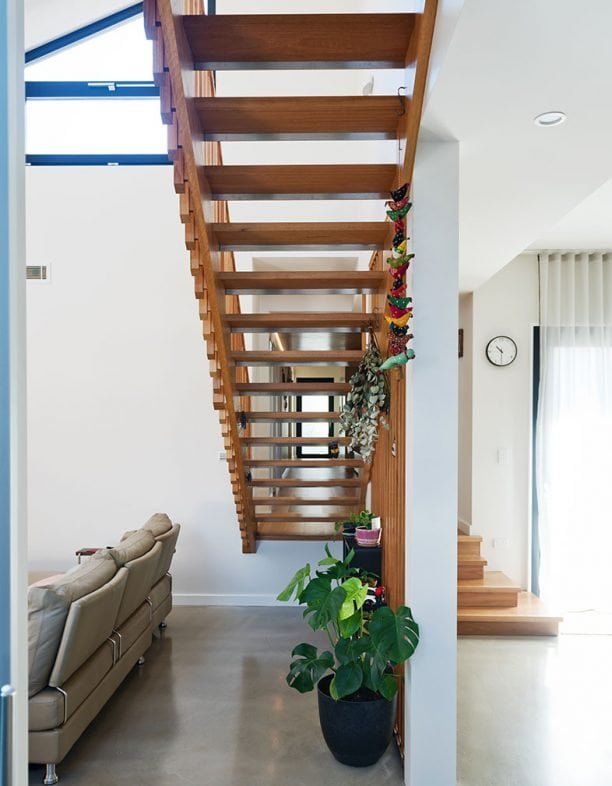
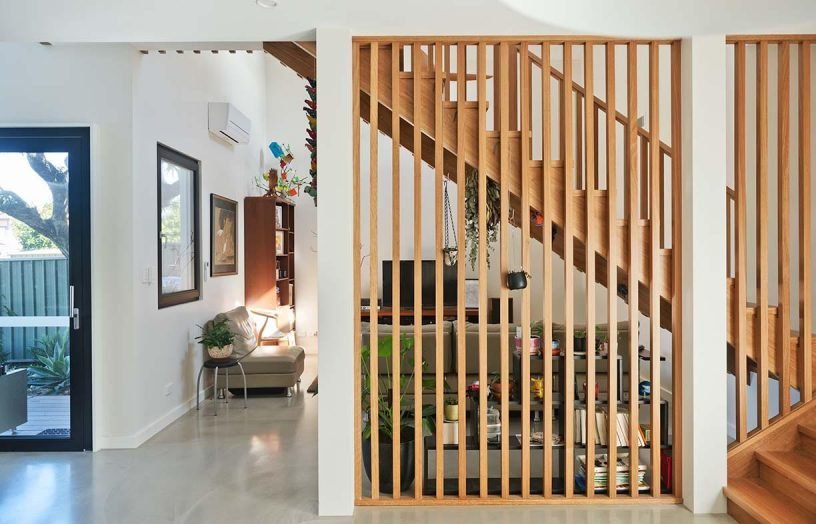
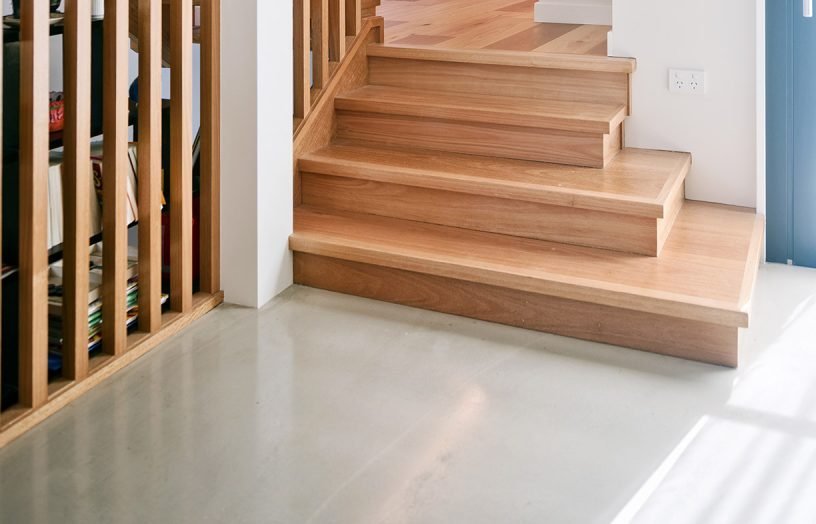
On the horizon
Geopolymer cement
Geopolymer (or polymer) cements offer the most likely next step away from Portland cement. Geopolymer cements are made from a variety of raw materials, including the byproducts of coal firing described above, and also from some unfired virgin minerals such as alkali-silicate rocks, and iron oxide rocks such as ferro-sialate. Geopolymer cement has higher strength than Portland cement because of its inherent ‘stickiness’, which allows designers and engineers to do more with a bit less – another sustainability advantage. It also has greater resilience in difficult environments, increasing the end product’s longevity.
One of Queensland’s larger concrete suppliers, Wagners, already offers a geopolymer product, marketed as Earth Friendly Concrete. Several years ago, this product (in precast form) won the A&D Sustainability Award for a multi-storey residential building at the University of Queensland’s Brisbane campus, and not just because it was almost carbon neutral – it was also highly detailed, beautifully finished, and being precast, fast to construct. Its only limitations to date have been the need for some training of concreters to understand its fast curing and other unique working characteristics, and the availability being limited to Wagners’ batching plants in south-east Queensland. The cost premium in Brisbane is about 25 per cent, mainly because of that city’s cut-throat concrete pricing. At the same cubic metre rate in Sydney or Melbourne the difference would be about 10 per cent.
Wagners is currently exploring commercial licensing of the patented technology with other manufacturers in Australia and Europe. It’s exciting to see a major sustainability initiative like this coming out of corporate Australia, whose management see both the desperate ecological need and the economic opportunity.
Wagners Earth Friendly Concrete was used for the downstairs slab at Daniel and Marion’s renovated home in Brisbane. For the full story of Daniel and Marion’s project, designed by JDA Co., see Sanctuary 56.
Magnesium cement
In a ‘forwards to the past’ sense, magnesium cements may also provide a more sustainable option. These are among the most ancient of cements, with structures such as the Great Wall of China attesting to their longevity. They use unfired magnesium or calcium combined with carbon dioxide in a mineral carbonation process to form concrete – sequestering rather than emitting carbon dioxide. There are a number of small producers around the world making these cements, but for various technical and economic reasons they are yet to become mainstream. Making it commercially viable for the mass market in the 20th century proved too difficult for innovators like TecEco Cements in Tasmania, now defunct. However, with increasing concern about carbon emissions and the potential reduction in unit cost that would come from scaling up production, the 21st century may well see these low eco-impact concrete products make a big impact in the marketplace.
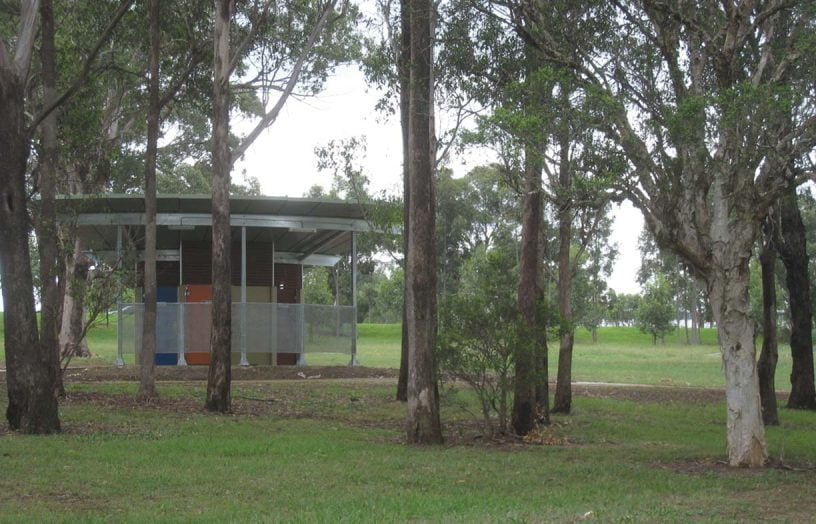
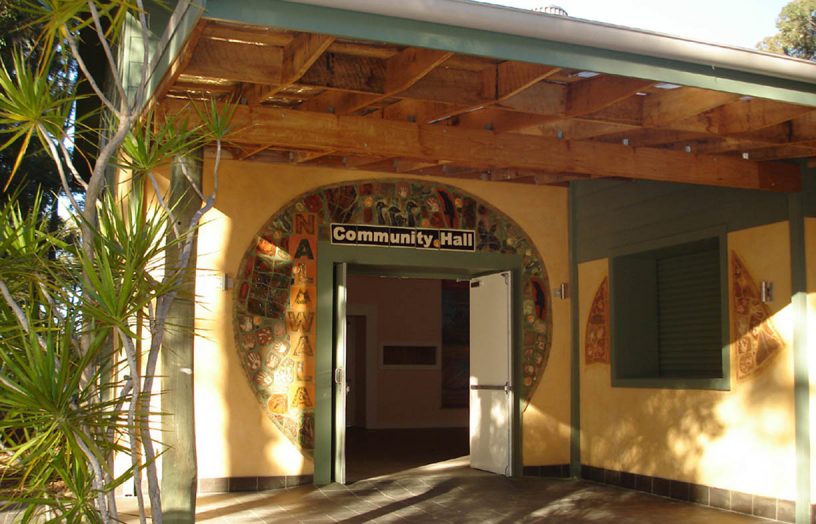
Change in the wind: regulations and rating schemes
In Australia’s CBDs, the Green Building Council of Australia (GBCA) Green Star rating scheme has ruled the roost for commercial and civic buildings for over a decade, with low eco-impact materials gaining significant credits. The biggest drivers have been the major corporate asset owners like banks and superannuation funds, who invest many millions into buildings and want them to bring rental returns for decades to come, thus future-proofing the investment. The GBCA has been working on a residential version of the Green Star scheme, and the carbon footprint of materials will be part of it. For anyone investing hundreds of thousands of post-tax dollars into a house, future-proofing that investment should be just as important as it is to any corporate asset owner.
Also, for the very first time in Australia, New South Wales will soon begin asking questions about the carbon cost of materials used in residential projects via a new component in the BASIX tool, with a BASIX pass required during the approvals application process. Due for release sometime in 2022, the details are still being worked out, but it’s likely to be fairly gentle in its requirements, asking applicants to consider better options rather than penalising worse ones.
Embodied carbon is looming larger on everybody’s radar, not just the interested few. This will send a message to manufacturers about the market’s demand for lower carbon materials and products, and concrete is at the top of that hit list. Thankfully the industry has anticipated the shift, and there are already better choices on offer.
Beyond mere energy efficiency, having a low carbon home – in both its construction and its operation – is what the community is finally coming to expect. Low carbon and carbon neutral concrete provide a massive boost to achieving that goal.
For more information on how eco-concrete performs, see Jacinta Cleary’s case studies featured elsewhere in Sanctuary 58.
further reading
 Efficient homes
Efficient homes
Building for a changing climate
Are we building homes for the future, or for the past? Rob McLeod investigates how climate change is impacting home energy ratings and the way we build our homes.
Read more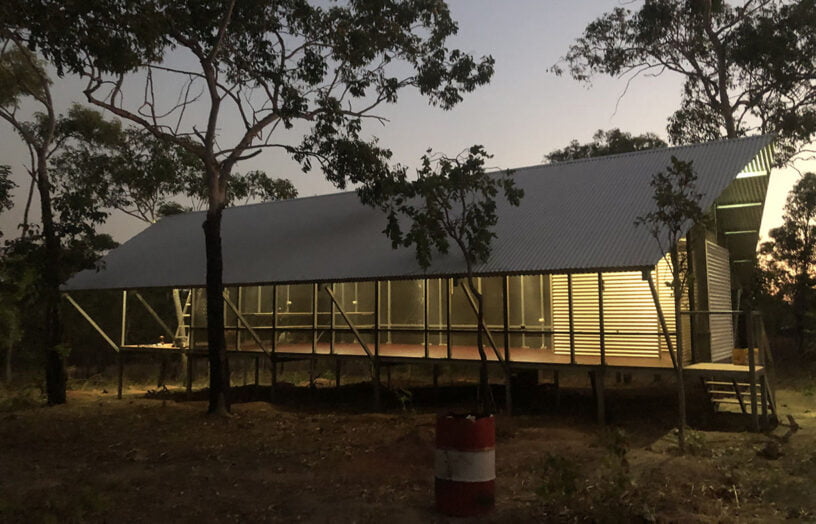 Efficient homes
Efficient homes
Remote communities leading the charge
We learn about four sustainability and renewable energy projects in remote Australia.
Read more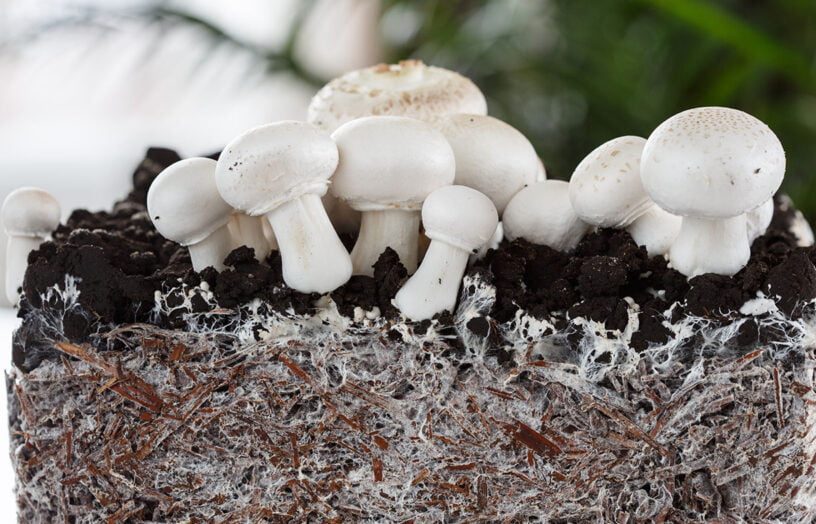 Efficient homes
Efficient homes
Fungimentally different
Fiona Gray unearths the potential of mycelium homes.
Read more

